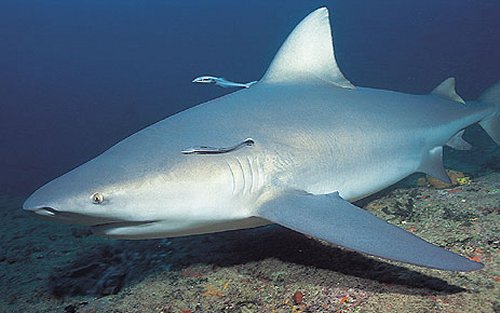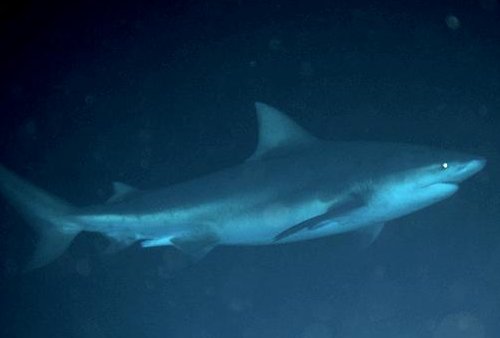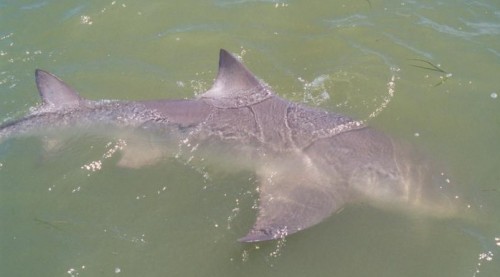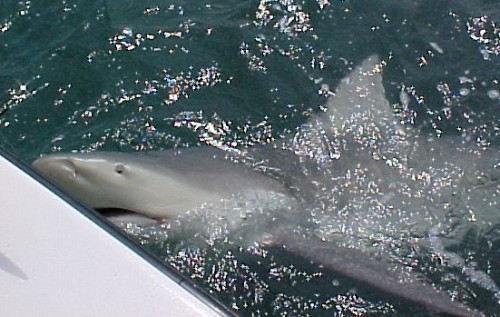Bull Shark (1/2)

Carcharhinus leucas
Size:
to 12 ft, perhaps larger
Habitat:
coastal waters, bays, rivers, into freshwater
Notes:
dangerous

The Bull Shark can be recognized by a combination of characters including a stout body, short blunt snout, triangular serrated teeth in the upper jaw, and no fin markings as an adult. This species has a second dorsal fin about one-third the height of the first, a small eye, and no skin ridge between the two dorsal fins. It is gray above and pale below, sometimes with a pale stripe on the flank.
The Bull Shark can live in a wide range of habitats from coastal marine and estuarine, to freshwater. It has been recorded from the surf zone down to a depth of at least 400 ft. It is the only species of shark that is known to stay for extended periods in freshwater. It has been reported nearly 2400 miles from the sea in the Amazon River system, up the Mississippi River as far as Illinois, and is known to breed in Lake Nicaragua, Central America. It is also common in the rivers of Australia, Africa, South America, and southern Asia, and is a real danger throughout all the rivers of Florida and the southeast United States. Occasional rumors of them in the Great Lakes are almost certainly false; the lakes are far too cold for this warm-water species.
The Bull Shark is a large species which grows to a length of 12 ft. It has an omnivorous diet which includes fishes (including other sharks), dolphins, turtles, birds, mollusks, echinoderms and even terrestrial mammals. This is an aggressive species that is considered dangerous to humans. Some authors consider that the Bull Shark may be more dangerous than the Great White Shark and the Tiger Shark. This is because of the Bull Shark's omnivorous diet and habitat preferences. This species may be found in murky water, where the splashing of a swimmer could be mistaken for a struggling fish.
Bull Sharks typically prefer warmer waters but are not unknown around here. In fact, one of the most famous shark attacks in history occurred in 1916 in Matawan Creek, right here in New Jersey and not far from where I grew up, and it was probably one of these nasty critters, or perhaps a Tiger Shark. The novel and movie Jaws were inspired by this incident. The Bull Shark is probably the most dangerous shark in our waters. I remember a tour guide at Cape Kennedy once saying that most of the attacks attributed to alligators were really Bull Sharks. Or was it the other way around? Either way, it didn't sound too good.

Note the very small eyes - Bull sharks thrive in murky low-viz waters where keen eyesight is often of no use. Instead, Bull sharks hunt by smell, sound, and touch. This, coupled with their overall aggressiveness, makes them highly likely to strike at unknowns that are not necessarily good prey items, such as humans.



